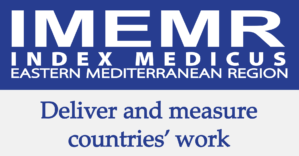Prevalence of Smoking among Young Pakistani Adults
DOI:
https://doi.org/10.53685/jshmdc.v1i2.66Abstract
Background: The history of smoking tobacco is primitive and dates back to as early as 5000 BC. In the last century this has changed to different forms like cigarettes, filtered cigarettes, self-made cigarettes, tobacco in leaf (beery), hukka, sheesha and pipe.
Objectives: To explore tobacco smoking practices in young adults and the factors that influences them to initiate or quit smoking.
Methods: It was cross sectional study based on a self-based on a self-administered questionnaire with a sample size of 486. Study subjects were young adults. The age of participants was between 17-35 years. Data was collected after taking an informed consent and the individual confidentially was maintained. A self- administered questionnaire was given where question were related to their socio-demographic characteristics and smoking behavior. The data was analyzed using SPSS version 20.
Results: Of the subjects who were interviewed almost 62% were smokers. Significant number of the people did not remember the age of smoking initiation. 97% of the subjects smoked manufactured cigarettes. 49.6% of smokers had to visit a physician in last 12 months but only 40% of them were counseled regarding smoking hazards and smoking cessation. 61.6% of people had not seen any information regarding hazards of smoking on any kind of media, 27.5% saw them on electronic media and 2.6% noticed them on Bill board.
Conclusion: The main determinants of regular smoking among the university students were male sex, lower education level and having friends who smoke. This calls for the implementation of sex and age specific anti-smoking policies. By assessing the smoking behavior in young adults, programs and policies can be designed with an aim to reduce smoking rates among the youth of our society.
Downloads
Published
How to Cite
Issue
Section
License
Copyright (c) 2019 Fizza Nasim, Saira Yousaf, Rozina Arshad, Bilal Bin Younis, Adeela Shahid, Hafiza Rabia Naeem

This work is licensed under a Creative Commons Attribution-NonCommercial 4.0 International License.
You are free to:
- Share — copy and redistribute the material in any medium or format
- Adapt — remix, transform, and build upon the material
- The licensor cannot revoke these freedoms as long as you follow the license terms.
Under the following terms:
-
Attribution — You must give appropriate credit, provide a link to the license, and indicate if changes were made. You may do so in any reasonable manner, but not in any way that suggests the licensor endorses you or your use.
-
Non Commercial — You may not use the material for commercial purposes.
-
No additional restrictions — You may not apply legal terms or technological measures that legally restrict others from doing anything the license permits.




















